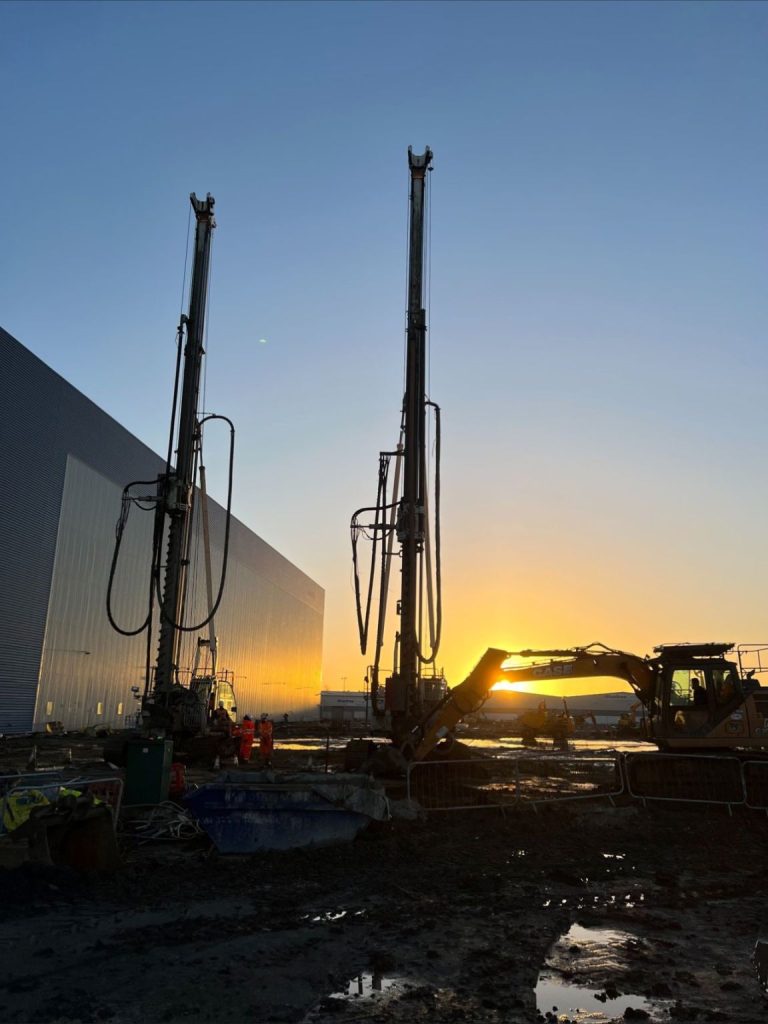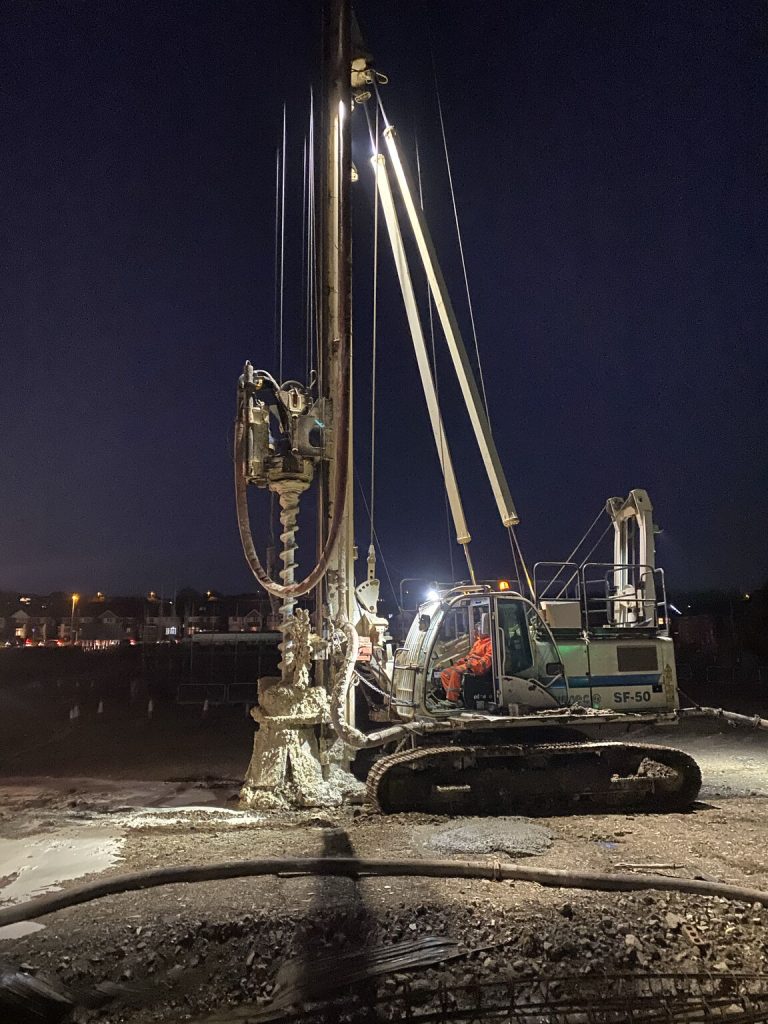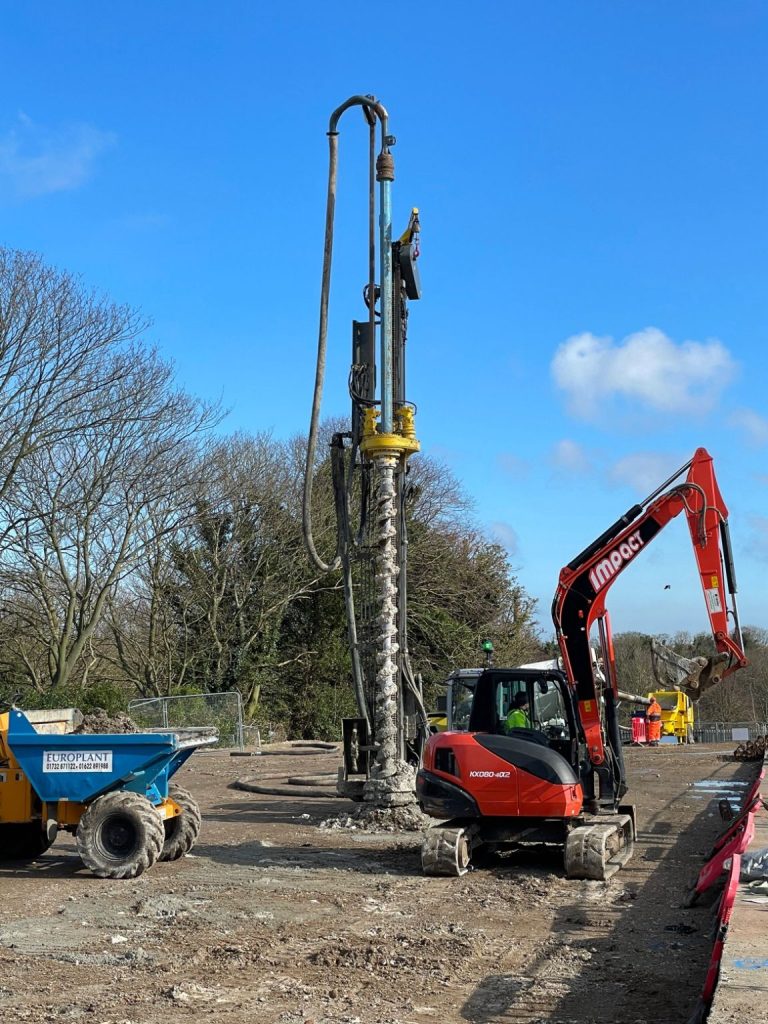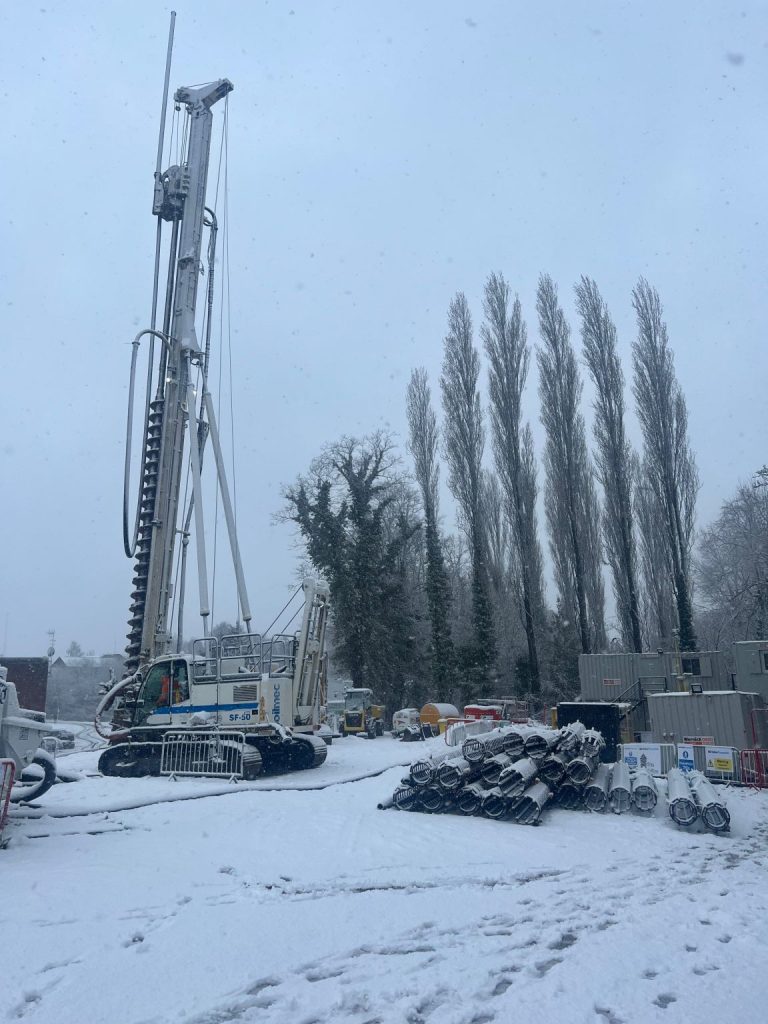What is Mini Piling? Installation Process and Benefits
Mini piling is a specialised technique of laying foundations that delivers reliable support in areas where space is limited or soil conditions are less than perfect. It is a reliable solution when conventional piling techniques are not feasible because of restricted access or smaller equipment requirements. This method is generally used in places where the ground is weak, the available working space is limited, or there are existing structures that limit the movement of big machinery.
Mini piles, otherwise called micro piles, provide structural integrity without requiring vast site clearance or heavy-duty piling rigs. Due to their compact size and adaptability, mini piling has become an efficient method in the construction sector, specifically in projects where space and ground conditions pose challenges that a larger piling system cannot tackle.
Comprehending Mini Piles
Mini piles are identified by their smaller diameters, generally ranging from 100 mm to 300 mm. This small size is what makes them appropriate for working in compact settings or places with limited access. Their capability to carry considerable loads despite their smaller size makes them a famous option for projects that need stable foundations but cannot support the use of conventional equipment usually utilised in conventional piling.
The procedure of mini piling includes using compact and manoeuvrable equipment that can smoothly fit into tight spaces. This machinery enables accurate placement of the piles without causing severe disturbance to the adjacent area. The piles are inserted deep into the soil, usually through weaker soil layers, to reach stable strata that can efficiently support the weight of the structure above.




Mon–Fri: 8:00am-6:00pm
Skilled Labour
Customer Satisfaction
Advanced Machines
The Installation Procedure of Mini Pile Foundations
The procedure of installing mini piles is both effective and highly controlled. It involves drilling, grouting, and safe load transfer to guarantee long-term structural support.
Drilling and Grouting
Installation starts with drilling into the soil utilising compact machinery. The tiny size of the equipment makes it possible to perform the work in spaces where bigger rigs would simply not fit. The drilling is performed precisely, allowing the equipment to advance through challenging soils or around existing foundations.
Once the drilling is finished, the holes are filled with high-strength grout. The grout not just secures the mini piles in place but also forms a strong bond with the nearby soil. This reinforces the piles and elevates their load-bearing capacities, offering the structure a dependable support.
Efficient Load Transfer
After the grout has set, the mini piles begin their crucial function of transferring the structure’s weight to deeper, more solid ground layers. By moving the load away from the poor surface soils, the mini piles avoid settlement and shifting, guaranteeing that the foundation remains stable with the passage of time. This method is especially useful in regions with unstable surface soil conditions.
Major Benefits of Mini Piling
Mini piling is celebrated for providing numerous distinct benefits, particularly when compared to traditional piling techniques. These advantages make mini piling a perfect solution for a broad spectrum of construction projects.
Robust Load-Bearing Performance
Even though mini piles are compact in size, they are fully capable of supporting hefty loads. Their load-bearing ability enables them to be used efficiently in both domestic and industrial projects, as well as in more minor infrastructure works.
Suitability for Different Ground Conditions
Mini piling is highly adaptable and appropriate for use in different ground conditions. Whether the ground is soft, weak, or hard to access, mini piles offer a versatile solution that can be adapted to the project’s particular needs. This flexibility is one of the major reasons mini piling is frequently used in various construction environments.
Minimum Disturbance to the Site
In contrast to traditional piling methods, which usually need extensive excavation and site preparation, mini piling can generally be performed with much less disruption. The precision of mini pile installation enables the work to be done effectively, decreasing the impact on the nearby area and environment. This is specifically significant when working on sites where space is restricted or where retaining the integrity of adjacent structures is necessary.
Budget-Friendly Option
Mini piling is a relatively more cost-effective option for smaller projects. As it involves the use of compact equipment and generally needs less labour and machinery, the total installation costs can be considerably lower in comparison to conventional piling methods. Moreover, the decreased requirement for large-scale excavation and site preparation may lead to further expense reduction.
Environmentally Friendly
The mini piling procedure usually uses limited materials and lighter equipment, which can help lower the construction project’s ecological impact. With decreased fuel consumption and less site disturbance, mini piling supports planet-friendly building practices.
Swift Installation Time
Mini piles can generally be installed in a shorter timespan in comparison to conventional piles. The simplified drilling and grouting procedure, combined with the use of smaller equipment, enables quicker completion of the process of laying foundation. This effectiveness can aid in speeding up the overall construction project.
Space-Efficient Equipment
One of the key benefits of mini piling is its reliance on specialised, compact equipment. Unlike traditional piling methods, which require big, heavy machinery, mini piling is carried out using smaller equipment that is simpler to manage and can access tight or confined spaces. It is optimal for working underneath existing structures or in narrow spots.
Despite its reduced size, the machinery is capable of accomplishing deep pile installations and providing robust foundation support. The compact design of the equipment does not compromise the quality or stability of the end result.
Where Mini Piling is Most Appropriate?
Mini piling provides handy solutions in a range of project settings where space, access, or ground conditions present serious challenges.
- Domestic Foundations: Mini piles offer reliable support for residences built on weak or shifting soils.
- Home Extensions and Renovations: When extending present buildings or adding new levels, mini piles can be installed in regions where bigger equipment is unable to reach.
- Waterfront and Coastal Structures: Mini piles are incredibly efficient for supporting buildings near water, where soil might be sandy and water tables are high.
- Urban Construction Sites: Mini piling is appropriate for projects in compact built regions where space is minimal.
- Commercial Developments: Mini piling provides a pragmatic and dependable solution for buildings that need firm foundations in challenging ground conditions.
- Infrastructure Support: Mini piles can offer foundation support for minor infrastructure elements, like walkways and retaining walls, particularly in regions with restricted access.
- Seismic Reinforcement: In areas susceptible to soil movement, mini piles can strengthen existing structures and add to their durability.
- Basement and Subterranean Projects: Mini piling is beneficial for constructing basements or underground spaces where foundation reinforcement is required.
- Industrial Site Support: Mini piling provides top-notch performance for smaller industrial buildings or site expansions where the soil conditions are not perfect.
When Mini Piles Offer the Best Solution?
Mini piling is becoming the preferred option in particular scenarios where conventional piling is either not practical or impossible.
- Tight Spaces: Mini piling is the ideal solution when the construction site has limited headspace and restricted access, or when work is required beneath existing structures.
- Complex Soils: In regions with weak, unstable, or shifting soil layers near the surface, mini piles securely transfer loads to deeper, safer soil layers.
- Renovations and Upgrades: When adding to existing buildings or reinforcing old foundations, mini piles offer the adaptability to work without disturbing the original structure.
- Coastal Projects: In places where sandy soils and high water tables create unstable ground, mini piles deliver the needed strength to support lasting construction.
Mini piling is specifically efficient in these situations because it can solve issues that traditional methods cannot efficiently tackle.
Long Story Short!
Mini piling is a pragmatic and flexible method of laying foundations that satisfies the requirements of contemporary construction where space, access, or ground conditions present limitations. Mini piles can carry heavy loads, work in limited spaces, and produce decreased site disruption, making them a dependable option across a large number of building projects.
By using compact equipment and approved installation methods, mini piling guarantees robust, stable foundations without the high expenditures or ecological impacts connected with bigger piling systems. Whether for domestic buildings, industrial properties, infrastructure support, or renovations, mini piles offer a safe foundation solution that meets the particular challenges of every site.
For trustworthy and expert mini piling services, feel free to contact Alpha Piling LTD. We offer professional solutions customised to your particular foundation requirements, guaranteeing lasting stability and reliable results.
